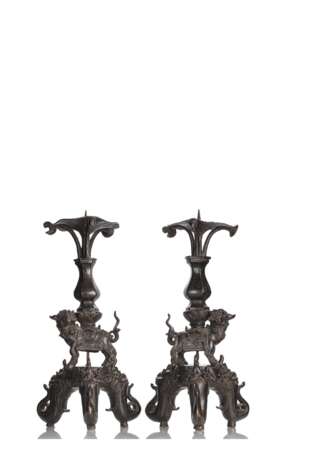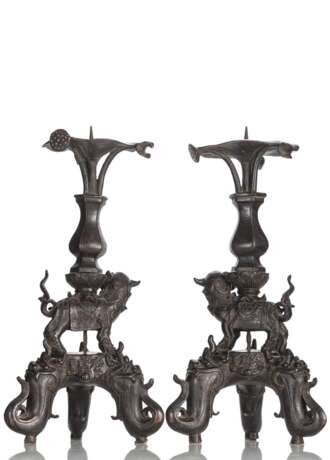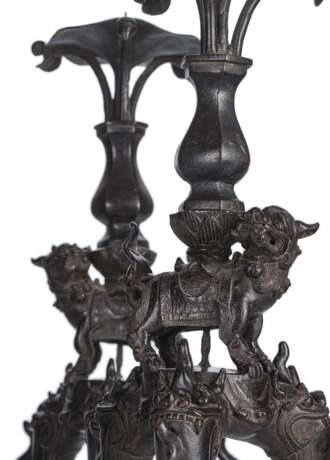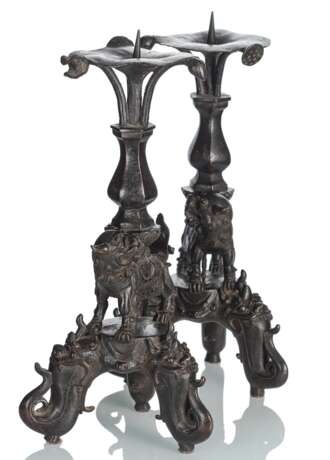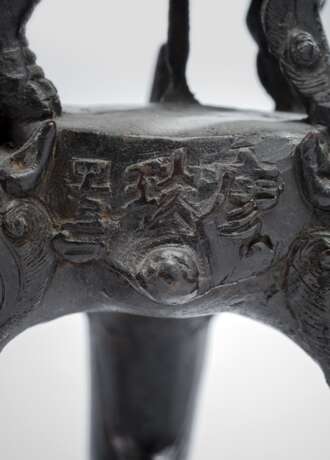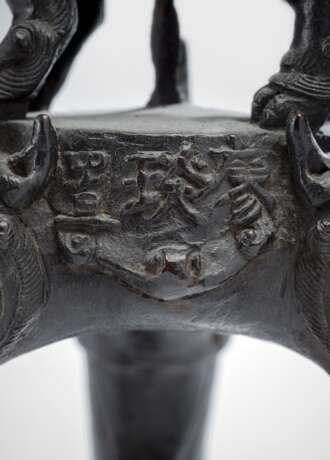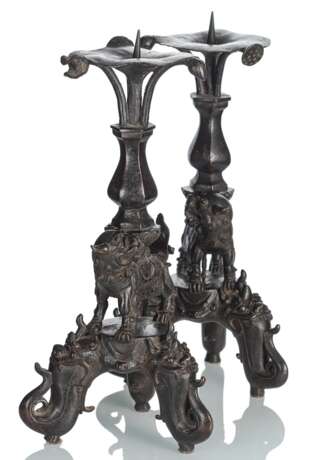ID 1215671
Lot 269 | Großer Paar Altarleuchter aus Bronze auf drei Beinen
Estimate value
€ 3 000 – 5 000
H. 50 cm
Obwohl in einem Stück gegossen, lässt sich dieses seltene Kerzenleuchter-Paar optisch in kleinere skulpturale Einheiten zerlegen, die sich zu einem harmonischen Ensemble zusammenfügen. Der untere Teil besteht aus einer starken und gewichtigen Stütze, die als drei Drachenköpfe modelliert ist, die ihre eigenen Schwänze verschlingen. Auf diesem Sockel befinden sich Löwen, die eine Vase mit einem Arrangement aus Lotusblumen tragen, aus dem die zentrale Pricket hervorgeht. Auf den Rückseiten der Sockel ist eine gegossene Stifterinschrift angebracht.
Alte norddeutsche Privatsammlung, versteigert bei Lempertz Köln, 26.5.1995, Los 12 und vom jetzigen Besitzer erworben
Während der Westen zu dieser Zeit Kohle zum Beleuchten der Häuser verwendete, züchtete man in China bereits kleine Würmer, die in einem Baum namens Pelachou lebten, was soviel wie "der weiße Wachsbaum" bedeutet. Diese Tiere produzierten ein hartes, glänzendes Wachs, das von weitaus besserer Qualität war als das Bienenwachs und sogar viel teurer. Diese Art der Herstellung von weißem Wachs wurde in der 1769 erschienenen Histoire Générale des Voyages beschrieben. Es war üblich, ein Schilfrohr als Docht zu verwenden. Kerzenständer dieser Art wurden paarweise als Teil einer formalen Anordnung im Gottesdienst verwendet und zu beiden Seiten eines zentralen Räuchergefäßes aufgestellt. Für ein ähnliches Beispiel siehe Münsterberg "Chinesische Kunstgeschichte", Esslingen, 1912, Band II, S. 145, Abbildung 243b. Ein bronzener Kerzenleuchter ähnlichen Datums mit den dazugehörigen drei Beinen ist abgebildet in Michael Goedhuis 'Chinese and Japanese Bronzes, A.D. 1100 - 1900', London 1989, Nr. 54 - Leichte Altersspuren, Dorne ersetzt
| Address of auction |
Nagel Auktionen GmbH Neckarstrasse 189 - 191 70190 Stuttgart Germany | ||||||||||||||
|---|---|---|---|---|---|---|---|---|---|---|---|---|---|---|---|
| Preview | |||||||||||||||
| Phone | +49 (0)711 649 690 | ||||||||||||||
| Fax | +49 (0)711 649 69696 | ||||||||||||||
| Buyer Premium | 29,5% | ||||||||||||||
| Conditions of purchase | Conditions of purchase | ||||||||||||||
| Business hours | Business hours
|
